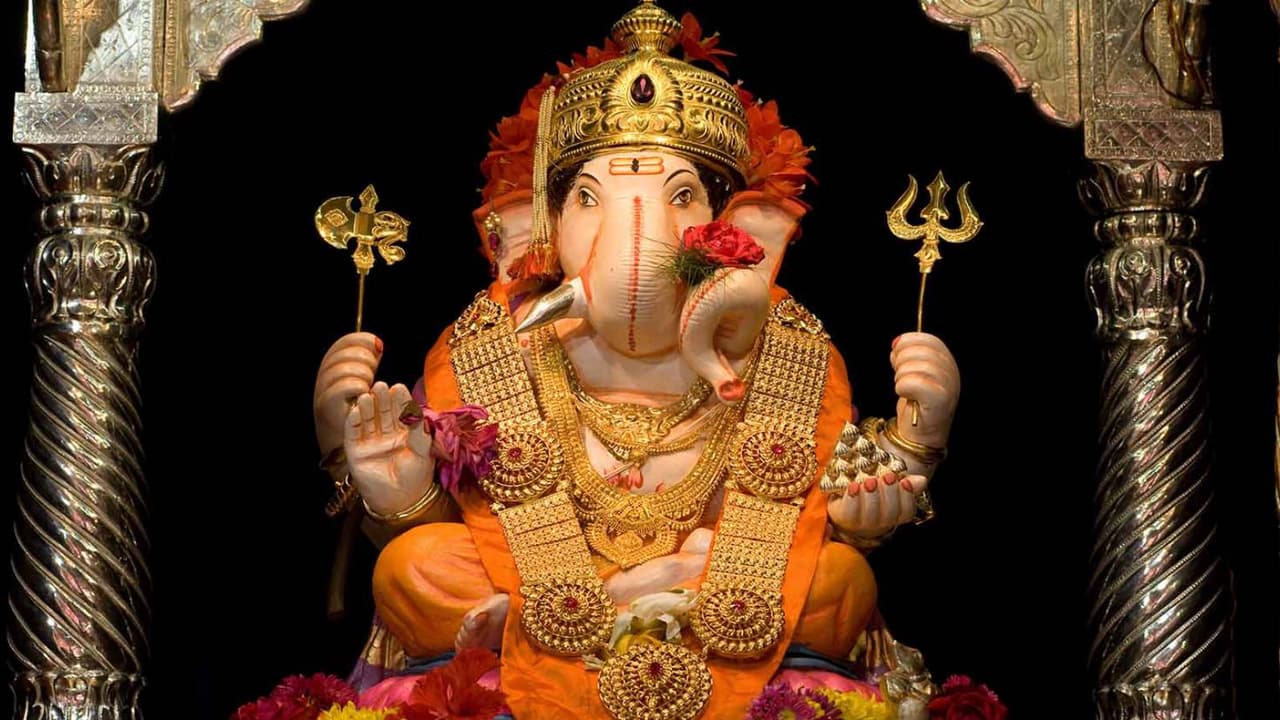Ganesha, the beloved remover of obstacles, is celebrated in countless forms across India. From Mumbai’s majestic Lalbaugcha Raja to Bengal’s clay idols and Pune’s eco-friendly innovations, each face tells a unique cultural story
Ganesh Chaturthi: Ganesha is the beloved elephant-headed deity. He is worshipped as the ‘Vignaharta’ meaning the remover of obstacles and the harbinger of wisdom and prosperity. The image that we generally worship is a plump, smiling God with a curved trunk and a gentle eyes. In the wide length and breadth of the country, Ganesha is imagined and worshipped differently in different parts of the country. From towering idols to simple clay figures, Ganesha takes on many forms reflecting the culture, spirit and priorities of the communities that worship him.
Let’s take a closer look at some of the many faces of Ganesha, from Mumbai’s grand Lalbaugcha Raja to Bengal’s artistic clay idols and Pune’s eco-conscious innovations.
Lalbaugcha Raja, Mumbai: The King of Ganeshotsav
No discussion of Ganesha idols can begin without mentioning Lalbaugcha Raja, the most famous Ganpati in Mumbai. Established in 1934 in the working-class neighborhood of Lalbaug, this idol has grown into a cultural and spiritual icon, attracting millions of devotees every year.
What makes Lalbaugcha Raja so special is not just his towering presence—often more than 20 feet high—but also the faith attached to him. Devotees believe that prayers offered here are always fulfilled, and people stand in queues for hours, sometimes days, to get a glimpse of the Raja and seek his blessings. The idol is usually crafted in a majestic seated posture, exuding authority and serenity, symbolizing the protective guardian of the city.
Bengal’s Artistic Clay Ganeshas
While Mumbai is known for grandeur, Bengal brings art into the celebration. In Kolkata and other towns, Ganesh idols are often sculpted from clay in the lanes of Kumartuli—the same potter’s lane that creates the iconic Durga idols.
Unlike the massive fiberglass or Plaster of Paris (PoP) idols seen elsewhere, Bengal’s Ganeshas are smaller, hand-crafted, and intricate. Clay is molded into delicate forms, painted with earthy colors, and sometimes adorned with shola pith decorations, the same material used for Durga’s crowns. The emphasis here is not size but artistry.
In many Bengali households, Ganesha is also worshipped alongside Goddess Lakshmi during Lakshmi Puja after Durga Puja. Here, Ganesha is portrayed as the dutiful son, calm and wise, often shown reading scriptures or holding a modak. These depictions highlight not just his divine power but also his human qualities of wisdom, humility, and devotion.
The clay idols, once immersed in water, dissolve back into the rivers, embodying the cycle of life and renewal. This practice also makes Bengal’s celebrations deeply eco-friendly, rooted in respect for nature.
Pune’s Eco-Friendly Innovations: Green Ganeshas for a New Era
In recent years, Pune has emerged as a pioneer in eco-conscious Ganeshotsav celebrations. With growing awareness about environmental damage caused by non-biodegradable idols, many communities and individuals in Pune have embraced sustainable practices.
One of the most popular innovations is the “seed Ganesha.” Crafted from natural clay and embedded with plant seeds, these idols are designed to be immersed in pots at home rather than in rivers or lakes. Once the clay dissolves, the seeds sprout, leaving behind a living memory of the festival in the form of a plant. This symbolizes not just the cycle of creation and dissolution but also the responsibility to nurture life.
Other eco-friendly practices include idols made of papier-mâché, natural dyes instead of chemical paints, and community immersion tanks that prevent water pollution. These innovations reflect Pune’s spirit of blending tradition with responsibility, ensuring that devotion does not come at the cost of the environment.
The modak-loving childlike Ganesha appeals to families, while the powerful warrior Ganesha seen in some Maharashtrian depictions resonates with the legacy of Shivaji and the Maratha spirit. In every form, the essence remains the same—Ganesha is the approachable god, close to his devotees, always ready to listen and bless.
The Cultural richness of Ganeshotsav
Ganeshotsav, first popularized as a public festival by Bal Gangadhar Tilak in the late 19th century, was originally intended to unite people during India’s struggle for independence. Over time, it evolved into a massive cultural celebration, bringing together art, music, theater, dance, and community service.
Today, whether it’s the grand pandals of Mumbai, the artistic lanes of Kolkata, or the green movements of Pune, the festival continues to be a reflection of Indian society’s dynamism. It’s not just about worship but also about identity, creativity, and responsibility.
The diversity of Ganesha’s faces across India tells us something profound: faith is not static. It adapts, evolves, and expresses itself in countless ways. Ganesha’s many forms mirror the diversity of India itself—vibrant, inclusive, and ever-changing.
From the majestic Lalbaugcha Raja to the delicate clay idols of Bengal and the eco-friendly innovations of Pune, Ganesha reveals himself in myriad forms across India. Each face tells a different story, each idol reflects a different value—be it grandeur, artistry, or sustainability.
And yet, in all these forms, the essence of Ganesha remains constant: a god who is close to his people, who listens to their prayers, and who reminds us of the importance of wisdom, humility, and renewal.
As we celebrate Ganeshotsav year after year, we are not just worshipping a deity—we are participating in a living tradition that continues to evolve while staying rooted in faith.
